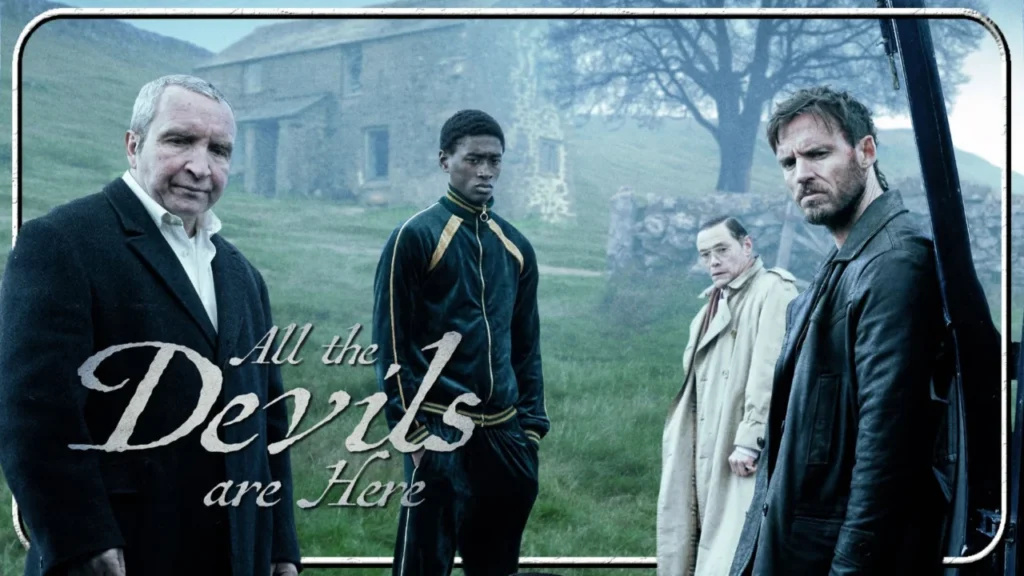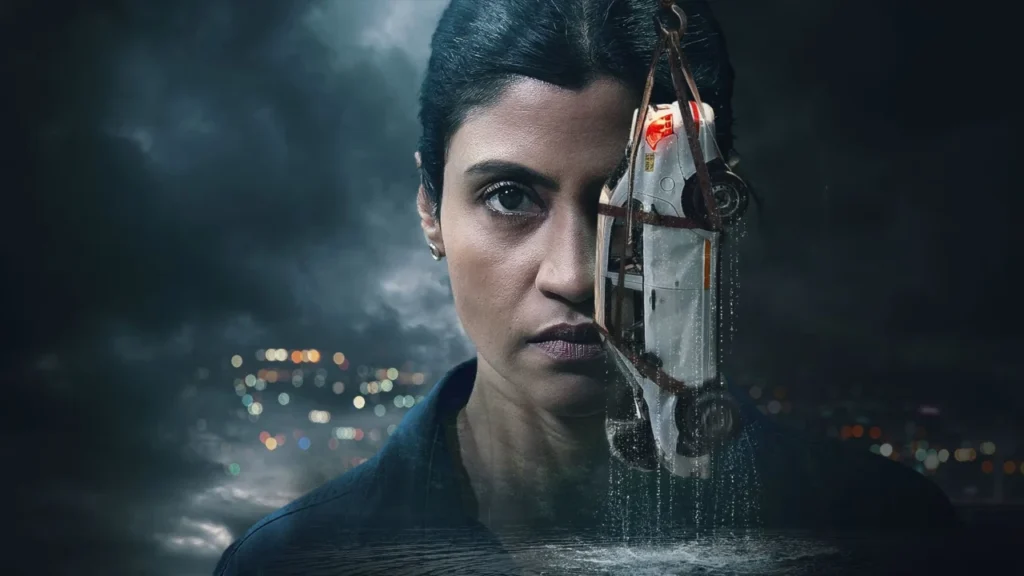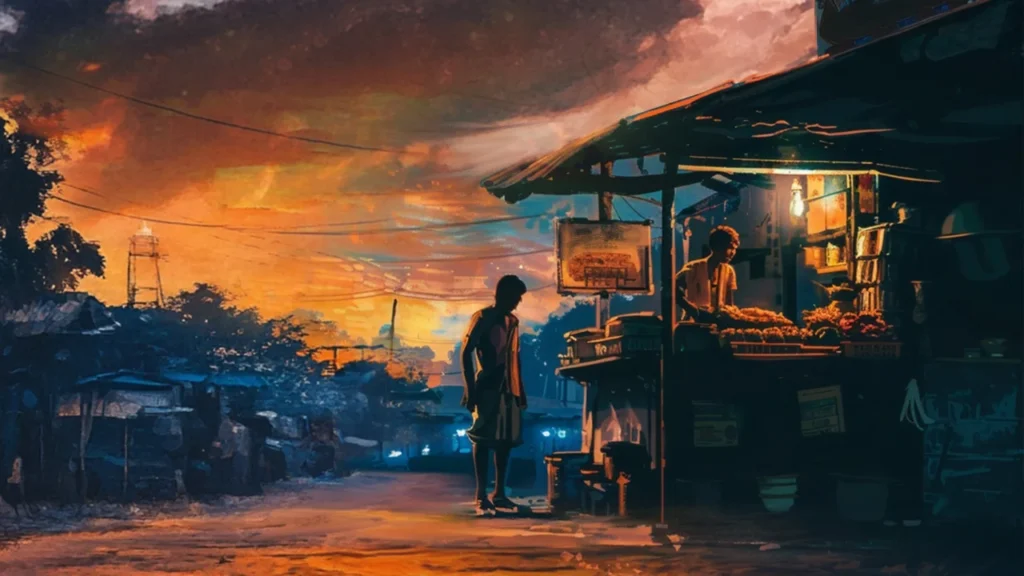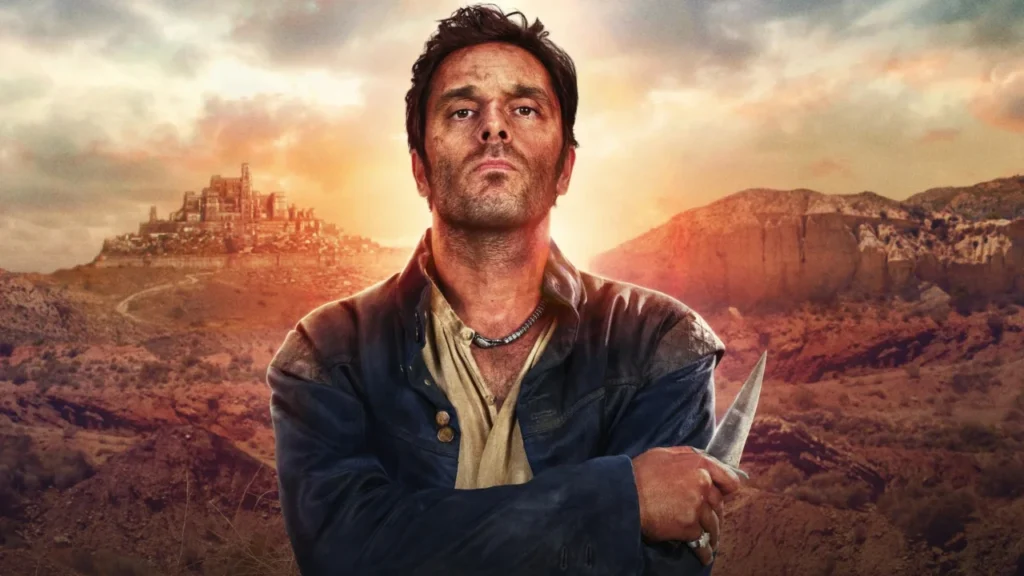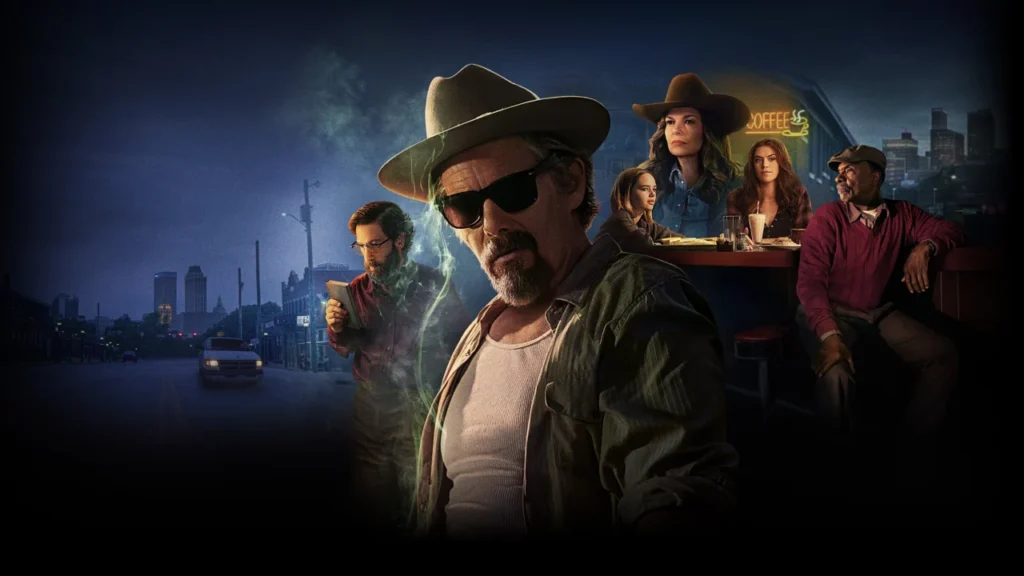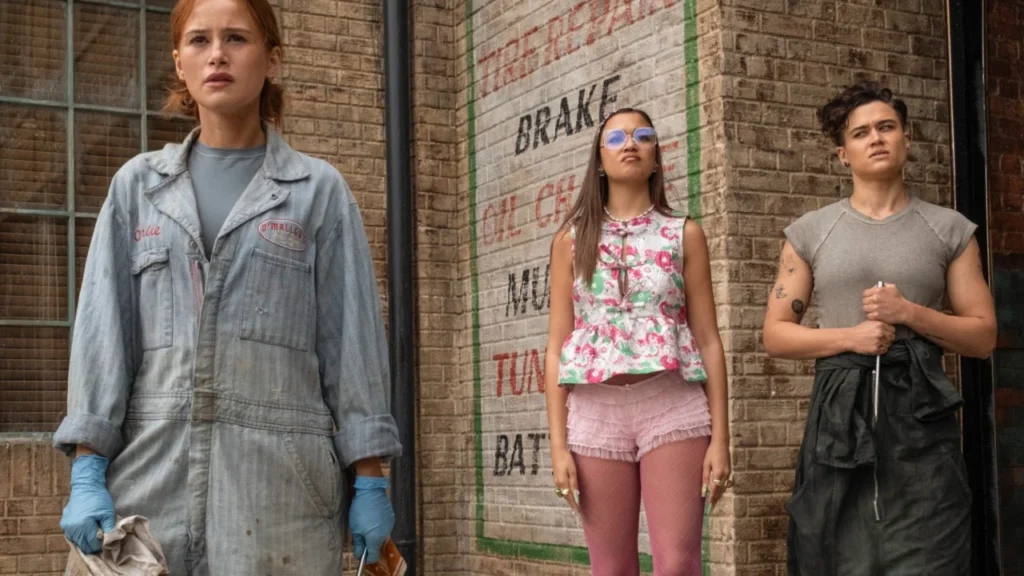Barnaby Roper’s crime thriller follows four criminals stuck in isolation after a bank robbery. Sam Claflin, Eddie Marsan, Burn Gorman, and Tienne Simon star in this dark tale. The title comes from Shakespeare’s The Tempest. What begins as criminals waiting out a heist becomes a twisted journey into guilt and retribution.
The film opened at the Edinburgh International Film Festival in August 2025. John Patrick Dover wrote the script. The cast includes Suki Waterhouse and Rory Kinnear in smaller roles. Four strangers end up trapped in a falling-apart cottage on Dartmoor. They wait for orders that might never arrive.

Were the Criminals Already Dead?
The movie’s big twist reveals that Ronnie, Grady, Numbers, and Royce actually died before they reached the cottage. They robbed a bank and planned to hide out safely. But their escape went wrong in two terrible ways.
During the robbery, Grady killed a security guard. This wasn’t supposed to happen. Later, Royce hit a pedestrian while driving distracted. The car flipped over and burst into flames right after.
The cottage isn’t a hideout at all. It’s their version of hell. Every fight and violent moment is punishment for their crimes. Numbers died from an overdose while waiting for them. His death brought him to this same dark place.
Viewers might miss this at first. The movie looks like criminals losing trust in each other. But clues appear throughout the story.
Ronnie’s watch stops. The TV only shows static. Pipes leak constantly and nothing works properly. They count seven days but time feels stuck.
These details aren’t just about a run-down building. They show that these men left the living world behind. They now exist in a space designed to make them face what they did.
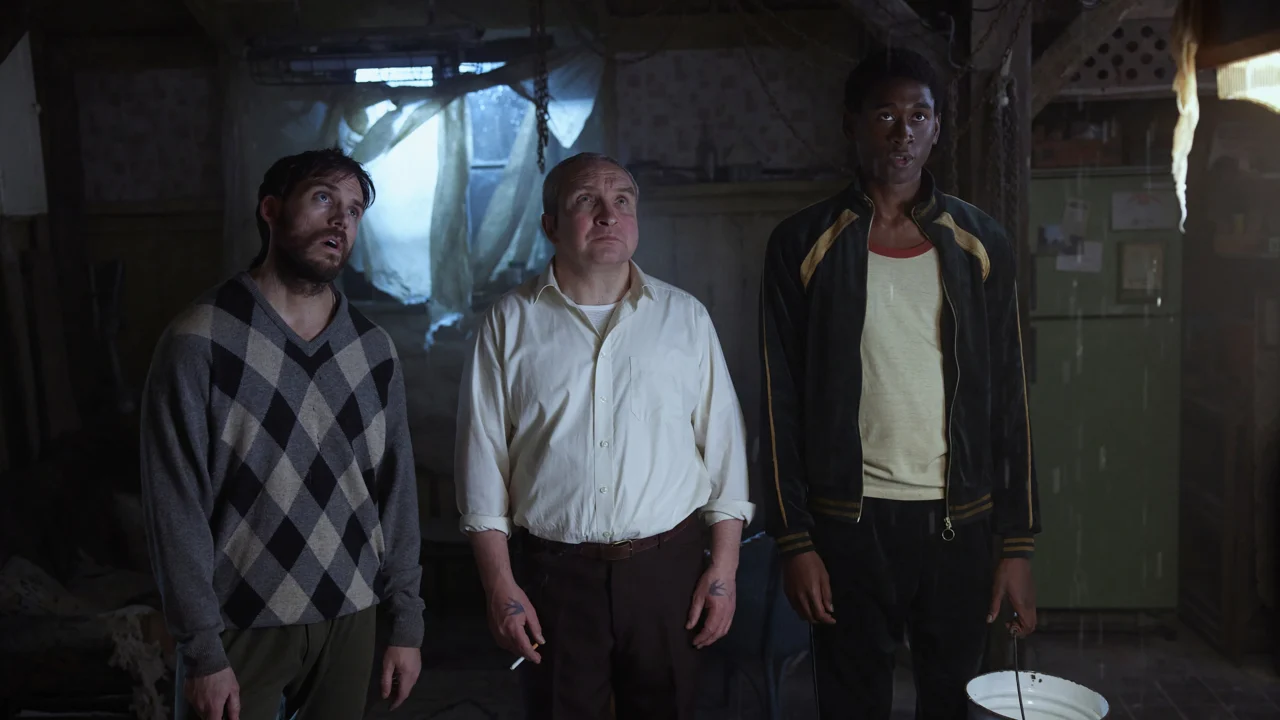
Who Was the Mysterious Woman?
A woman who calls herself ‘C’ shows up at the cottage one day. She says their boss sent her with food and supplies. She tells them they need to wait even longer.
Grady says disturbing things to her immediately. But Ronnie wants to protect her. He never met his own daughter who’s around her age. When she was born, he sat in prison.
The ending hints that ‘C’ could be the woman their car struck. We don’t know if she walked into traffic on purpose or by accident. But her appearance in their afterlife has meaning.
You might see ‘C’ as Ronnie’s daughter. If true, he helped cause her death without knowing. Years without a father may have hurt her badly. Ronnie wouldn’t recognize her face since they never met.
Another way to read it: ‘C’ is their innocent victim coming back. She seems helpful at first but never returns with more supplies. This pushes them deeper into fear and violence against each other.
Her part in their punishment looks planned. She makes them deal with their guilt while trapped here. The movie doesn’t spell out who she really is. This uncertainty adds more weight to their torment.
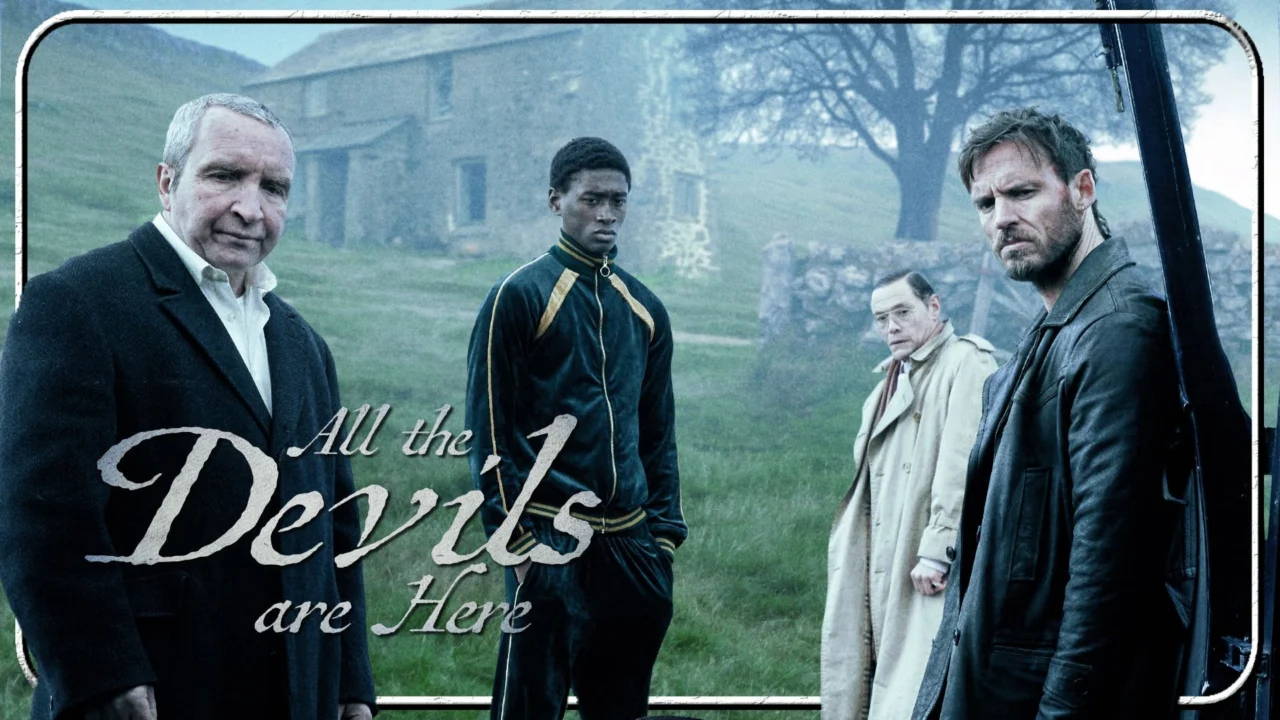
How Did Ronnie Realize the Truth?
Days pass with no message from their boss Mr. Reynolds. The group starts falling apart. Grady becomes sure they got betrayed. He thinks the boss wants them dead so he can take their stolen money.
Grady tries getting Ronnie to kill Numbers with him. Ronnie says no. He learned long ago that staying loyal keeps you alive. When Grady talks crudely about ‘C’, Ronnie loses it and knocks him out cold.
We learn that Numbers is a child predator who faced many charges. Mr. Reynolds made those problems disappear. While Ronnie tries keeping order, Numbers just stays high on drugs.
After waking up, Grady goes after Royce, who’s younger than the rest. The whole film asks whether Royce will be different. Will he find redemption or give in to darkness?
Grady talks Royce into helping murder the others so they can escape. Royce agrees because survival matters more than being good. But Grady planned to betray him all along. After Numbers dies, Grady stabs Royce in the back.
Fighting breaks out between everyone. Despite his stab wound, Royce manages to shoot Grady to help Ronnie. Violence keeps going until Ronnie heads for the door. Then ‘C’ appears and says he has to stay put.
What Does Mr. Reynolds Represent?
Mr. Reynolds never appears on screen, but his presence hangs over everything. He works like the devil in this story. These criminals spent their whole lives working for him. Along with Harold Laing, he found broken people who seemed desperate or already crossed lines.
They gave them money and safety in exchange for doing worse and worse things. These men basically traded their souls for cash and the illusion of protection.
After dying in that crash, their souls got stuck here. They didn’t move to any normal afterlife. They’re caught in endless cycles of the violence they lived by. Mr. Reynolds controls them even after death.
The orders they keep waiting for will never come. Freedom isn’t the point of this place. The cottage exists to make them suffer for every choice they made. It’s hell built just for them.
I believe these men chased money without caring who got hurt. They betrayed and killed without thinking twice. Now they sit in a place where money has zero value. They can’t really kill each other permanently. Their worst impulses just repeat forever.
Mr. Reynolds stays invisible because that’s how he always worked. You couldn’t see his chains when they were alive. You can’t see them now either.
Can They Ever Escape?
The final scenes ask tough questions about whether redemption is even possible here. Ronnie discovers he can’t leave no matter how hard he tries. The others can’t properly die even when they kill each other.
Grady takes bullets but doesn’t stop existing. All their violence changes nothing except making things worse. Time refuses to move ahead. Ronnie’s broken watch shows time frozen in place.
The movie suggests their souls stay trapped until they truly face themselves. Ronnie always blamed his circumstances for his failures. He told himself he had no choice but crime. He couldn’t be there for his daughter.
Grady never felt guilt about anything. He answered every problem with fists or worse. Numbers hurt children and showed no shame. Royce told himself he was better than them while doing evil things anyway.
Their real punishment isn’t the physical pain. It’s being forced to see themselves clearly for the first time. They can’t make excuses anymore. No drugs or violence or lies can save them.
The cottage tears down every defense they built. It leaves them alone with themselves and each other. Maybe only real honesty about what they did could free them eventually.
But the film doesn’t give us that ending. We don’t see them redeemed or changed. Their suffering looks like it just started.
My Take on This Dark Film
All the Devils Are Here takes a crime thriller setup and turns it into something else entirely. The supernatural twist changes how you see every scene that came before. It becomes a story about facing consequences you can’t outrun.
Eddie Marsan and Sam Claflin deliver strong performances that keep you invested even when things get strange. Roper’s directing maintains tension in scenes that mostly involve people arguing in one location.
Not everyone will love this movie. Some wanted a normal heist thriller and got frustrated. Others liked the mystery and how the ending makes you rethink everything.
The middle section drags at times. Watching people argue in a cottage tests your patience. But that trapped, suffocating feeling matters to the story. These aren’t criminals in a safe house anymore.
They’re souls stuck in their own personal hell, replaying the patterns that destroyed their lives. The Shakespeare title reminds us that the scariest monsters live inside us, not in some other realm.
The cottage sits outside normal time and space. These men finally have to look at who they became without anywhere left to run or any excuses left to tell themselves.

